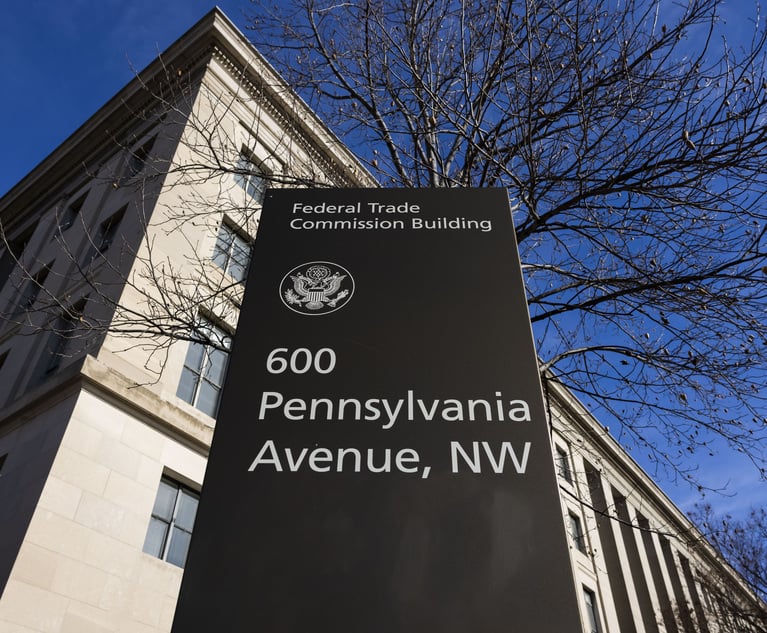R.I.P. 'Altman'
In their Rent Stabilization column, Warren A. Estis and Jeffrey Turkel, the attorney who successfully argued 'Altman v. 285 West Fourth LLC' in the Court of Appeals on behalf of the landlord, discuss the landmark case, which restored the pre-Altman state of the law and reversed a 2015 decision that effectively re-regulated thousands of deregulated apartments.
May 01, 2018 at 02:00 PM
8 minute read

On April 26, the New York State Court of Appeals unanimously reversed a 2015 decision of the Appellate Division, First Department in Altman v. 285 West Fourth LLC (127 AD3d 654 [1st Dept. 2015]). An affirmance would have resulted in the “re-stabilization” of thousands of previously deregulated apartments, along with tens of millions of dollars in rent refunds and rent reductions. The Court of Appeals decision ends a brief, but lively, chapter in the never-ending rent wars.
In the interest of full disclosure, co-author Jeffrey Turkel argued the Altman appeal in the Court of Appeals on behalf of the landlord.
Legislative History
The New York State Legislature first enacted luxury deregulation in 1993, permitting the permanent deregulation of vacant apartments with a rent of $2,000 or more per month. See L. 1993, ch 253. The issue then arose as to whether, for purposes of deregulation, the rent had to be $2,000 at the time the outgoing tenant vacated, or merely had to be $2,000 by the time the incoming tenant moved in.
An example easily illustrates the point. Assume that a stabilized apartment renting for $1,800 per month becomes vacant, and the incoming tenant seeks a two-year lease. Further assume that the owner renovated the apartment while it was vacant, and that the combination of the individual apartment improvements and the annual vacancy factor computed by the New York City Rent Guidelines Board (RGB) pushed the legal rent to $2,200 per month. Was the incoming tenant a rent-stabilized tenant at a rent of $2,200—because the rent was less than $2,000 at the time the former tenant vacated—or was the incoming tenant deregulated, because the legal rent was over the $2,000 threshold when the new tenant took occupancy?
In a 1995 opinion letter, DHCR wrote that as long as lawful post-vacancy increases raise the legal regulated rent above $2,000 by the time the new tenant moves in, an apartment is deregulated. Because many Manhattan apartments were close to the $2,000 threshold anyway, landlords, using a combination of the vacancy factor and individual apartment improvements, would make sure that the legal rent exceeded $2,000 prior to re-renting.
The New York City Council got wind of all of this in 1997, and strongly disagreed. Pursuant to Local Law No. 13 of 1997, the City Council amended RSL §26-504.2 to add a clause (“the first clause”) providing that luxury deregulation would only attach “where at the time the tenant vacated such housing accommodation the legal regulated rent was two thousand dollars or more per month.”
Two months later, the New York State Legislature enacted the Rent Regulation Reform Act of 1997 (L. 1997, ch 116). The Legislature disapproved of the City Council's amendment, but left the first clause in the statute. Instead, the Legislature added a second clause to RSL 26-504.2, introduced by the critical word “or,” which stated that deregulation would occur with respect to any apartment which “is or becomes vacant with a legal regulated rent of two thousand dollars or more per month.”
The Legislature's addition of the second clause was particularly important because the Rent Regulation Reform Act of 1997 also added a statutory vacancy increase of 20 percent for two-year leases, which increase took the place of the annual vacancy factor computed by the RGB. Given the 20 percent jumpstart, it became easy for owners to reach the $2,000 threshold, and achieve permanent deregulation, by means of individual apartment improvements. Thousands of apartments were deregulated in this manner under the second clause, which ultimately pertained to apartments that were vacant between June 19, 1997 and June 24, 2011.
In 2000, DHCR promulgated a regulation (RSC §2520.11 [r][8][i], thereafter renumbered as RSC §2520.11[r][10][i]) codifying its policy that an apartment would be deregulated where the existing stabilized rent, plus all legal post-vacancy increases, raised the rent above the $2,000 threshold.
'Altman'
In 2005, Richard Altman became the tenant of record of a Greenwich Village apartment. The rent for Altman's predecessor had been $1,829.49 per month, and increased to $2,261.25 with the 20 percent vacancy allowance. Altman signed a deregulated lease and paid a market rent for many years. In 2014, he brought a declaratory judgment action, claiming that he was rent-stabilized. Supreme Court (Mills, J.) disagreed, and Altman appealed.
The First Department reversed, citing the first clause of RSL §26-504.2, but not the second clause:
the motion court erred in dismissing plaintiff's complaint, and declaring that the apartment was not subject to the Rent Stabilization Law. Although defendant was entitled to a vacancy increase of 20% following the departure of the tenant of record, the increase could not effectuate a deregulation of the apartment since the rent at the time of the tenant's vacatur did not exceed $2,000 (internal citations omitted).
The First Department thereafter affirmed a judgment against the landlord in favor of Altman for over $165,000 in rent overcharges. 143 AD3d 415 (1st Dept 2016).
Suddenly, landlords who had followed DHCR's regulation, as well as lower court authority to the same effect, faced the prospect of massive overcharge refunds and rent reductions, and the “re-stabilization” of apartments that had been deregulated long ago under the pre-Altman state of the law.
Court of Appeals
Fortunately for landlords, the Court of Appeals granted leave. In its April 26 decision, the court focused on the language of both the first and second clauses:
The Appellate Division relied on the first clause, which plainly states that the relevant consideration for deregulation purposes is the legal regulated rent 'at the time the tenant vacated' the apartment. By contrast, the second clause provides that the key consideration when there is a vacancy is the legal regulated rent, without reference to the rent at the time of the tenant's vacatur. Given that the second clause is an alternative to the first (preceded by 'or'), it must mean something different from the first clause – i.e., something other than the legal regulated rent at the time the tenant vacated the apartment. Thus, it is reasonable to read the plain language of the second clause to refer to the legal regulated rent (including the available statutory increases) applicable to the apartment after the tenant's vacancy (italics in original).
Addressing the legislative history of the first and second clauses, the Court of Appeals wrote:
Here, the legislative history could not be clearer and leaves no doubt that the legislature intended to include the vacancy increase. Notably, in 1997, the New York City Council had enacted Local Law No. 13 to clarify its intent that 'a vacant housing accommodation becomes deregulated only where the maximum rent or legal regulated rent was $2,000 or more at the time the tenant vacated such housing accommodation.'
The state Legislature acted quickly in response to Local Law No. 13 by enacting the Rent Regulation Reform Act of 1997, effective June 19, 1997, to amend the high rent deregulation statute by adding the second clause—'or any housing accommodation which is or becomes vacant on or after the effective date of the Rent Regulation Reform Act of 1997 with a legal regulated rent of two thousand dollars or more per month.' The bill jacket demonstrates that the legislative intent was specifically to counter the provision added by the City Council in Local Law No. 13, stating that '[d]econtrol will be allowed at any time the vacant apartment has a maximum rent of $2,000 or more. The bill also eliminates restrictions imposed by the New York City Council which currently prevent vacancy bonuses and owner improvements from being considered in reaching the $2,000 threshold' (internal citations omitted, italics in original).
Accordingly, for apartments vacated between June 19, 1997 and June 24, 2011, vacancy deregulation will attach as long as post-vacancy improvements, when added to the last rent paid by the outgoing tenant, increase the rent above the $2,000 threshold. The court's order restores the pre-Altman state of the law, rendering the 2015 Altman decision a terrifying, but temporary, nightmare for landlords.
Warren A. Estis is a founding member of Rosenberg & Estis; Jeffrey Turkel is a member of the firm and argued the Altman appeal in the Court of Appeals on behalf of the landlord.
This content has been archived. It is available through our partners, LexisNexis® and Bloomberg Law.
To view this content, please continue to their sites.
Not a Lexis Subscriber?
Subscribe Now
Not a Bloomberg Law Subscriber?
Subscribe Now
NOT FOR REPRINT
© 2025 ALM Global, LLC, All Rights Reserved. Request academic re-use from www.copyright.com. All other uses, submit a request to [email protected]. For more information visit Asset & Logo Licensing.
You Might Like
View All

What Businesses Need to Know About Anticipated FTC Leadership Changes
7 minute readTrending Stories
Who Got The Work
J. Brugh Lower of Gibbons has entered an appearance for industrial equipment supplier Devco Corporation in a pending trademark infringement lawsuit. The suit, accusing the defendant of selling knock-off Graco products, was filed Dec. 18 in New Jersey District Court by Rivkin Radler on behalf of Graco Inc. and Graco Minnesota. The case, assigned to U.S. District Judge Zahid N. Quraishi, is 3:24-cv-11294, Graco Inc. et al v. Devco Corporation.
Who Got The Work
Rebecca Maller-Stein and Kent A. Yalowitz of Arnold & Porter Kaye Scholer have entered their appearances for Hanaco Venture Capital and its executives, Lior Prosor and David Frankel, in a pending securities lawsuit. The action, filed on Dec. 24 in New York Southern District Court by Zell, Aron & Co. on behalf of Goldeneye Advisors, accuses the defendants of negligently and fraudulently managing the plaintiff's $1 million investment. The case, assigned to U.S. District Judge Vernon S. Broderick, is 1:24-cv-09918, Goldeneye Advisors, LLC v. Hanaco Venture Capital, Ltd. et al.
Who Got The Work
Attorneys from A&O Shearman has stepped in as defense counsel for Toronto-Dominion Bank and other defendants in a pending securities class action. The suit, filed Dec. 11 in New York Southern District Court by Bleichmar Fonti & Auld, accuses the defendants of concealing the bank's 'pervasive' deficiencies in regards to its compliance with the Bank Secrecy Act and the quality of its anti-money laundering controls. The case, assigned to U.S. District Judge Arun Subramanian, is 1:24-cv-09445, Gonzalez v. The Toronto-Dominion Bank et al.
Who Got The Work
Crown Castle International, a Pennsylvania company providing shared communications infrastructure, has turned to Luke D. Wolf of Gordon Rees Scully Mansukhani to fend off a pending breach-of-contract lawsuit. The court action, filed Nov. 25 in Michigan Eastern District Court by Hooper Hathaway PC on behalf of The Town Residences LLC, accuses Crown Castle of failing to transfer approximately $30,000 in utility payments from T-Mobile in breach of a roof-top lease and assignment agreement. The case, assigned to U.S. District Judge Susan K. Declercq, is 2:24-cv-13131, The Town Residences LLC v. T-Mobile US, Inc. et al.
Who Got The Work
Wilfred P. Coronato and Daniel M. Schwartz of McCarter & English have stepped in as defense counsel to Electrolux Home Products Inc. in a pending product liability lawsuit. The court action, filed Nov. 26 in New York Eastern District Court by Poulos Lopiccolo PC and Nagel Rice LLP on behalf of David Stern, alleges that the defendant's refrigerators’ drawers and shelving repeatedly break and fall apart within months after purchase. The case, assigned to U.S. District Judge Joan M. Azrack, is 2:24-cv-08204, Stern v. Electrolux Home Products, Inc.
Featured Firms
Law Offices of Gary Martin Hays & Associates, P.C.
(470) 294-1674
Law Offices of Mark E. Salomone
(857) 444-6468
Smith & Hassler
(713) 739-1250








